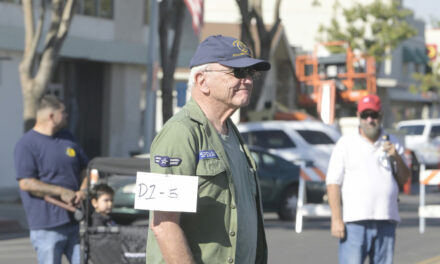Portland, Oregon, a city I recently visited for the first time, usually enters the news cycle, like other American cities, only when something very bad happens. You’ll hear about a city if it has floods, hurricanes, fires, lootings, shootings, tornados, earthquakes or heat waves.
As a native Chicagoan, for example, I’ve often heard people tell me that I must have lived in a very dangerous city. Some of these folks are referring to the days of Al Capone; others refer to recent gang violence.
Having lived there, however, I know that Chicago has many beautiful landscapes and buildings and many peaceful neighborhoods. Overall, it’s a terrific place to live in or visit.
Portland, similarly, was in the news several times earlier this year for bad things, especially when riots were reported in several areas of the city. From the news accounts, it seemed like the whole city of Portland was in flames.
When I visited Portland last month, it was quite different. The weather was sunny and mild, the landscapes were abundant with green trees and grass, and people gathered in peace and harmony. In short, I was impressed with Portland and enjoyed my experience there.
Maybe I liked it so much because it was so luxuriantly green, compared to the brown that is currently prevalent in so much of the Central Valley’s Westside. It also helped that the temperature was 20 to 30 degrees cooler in Portland than in Los Banos.
Reflecting on my time there, I realize it Portland was also enjoyable because of so many good things I experienced there, including a wide river flowing through it and crossed by many bridges (it is sometimes called “the City of Bridges”) and many parks and gardens through which I walked (it’s sometimes called “the City of Roses”).
I also sensed that Portland is intellectually alive, with many universities, a large museum and a renowned bookstore.
When I was there, Portland could have also been called “the city of music,” with a three-day blues festival by the river downtown, some of which I was able to enjoy by listening from my hotel window.
I also walked through an expansive farmers’ market adjacent to the campus of Portland State University near downtown Portland. It was one of the most varied and extensive farmers’ markets I’ve seen, featuring fruits, vegetables, flowers, and prepared food—to name just a few items.
While talking to one of the volunteers for the Portland Farmers’ Market (PFM), I realized the market was not a spur-of-the-moment idea. The Portland Farmers’ Market has been ongoing since 1992, with sites in several Portland neighborhoods on different days of the week.
On Saturdays, the PFM is at Portland State, on Sundays at two other Portland locations, on Wednesdays in two other city neighborhoods. The PFM volunteers directed me to their website: www.portlandfarmersmarket.org.
There I learned that the PFM is a 501(c)6 not-for-profit organization governed by an all-volunteer board of directors, with a mission “to contribute to the success of local food growers and producers and to create vibrant community gatherings.”
In its stated vision the PFM wants “food producers to thrive and expand” and wants “all residents to have access to farm-fresh food.” The PFM aspires to “build, nourish and inspire community” by attracting shoppers to “marketplaces where small businesses can prosper.
In another experience, a river dinner cruise, I realized the importance of Portland’s location at the intersection of two wide rivers.
The Columbia River forms the northern boundary of Portland, while the Willamette River runs right through it with many bridges connecting the east and west sections of the city.
On my early evening cruise on the Willamette, which started from downtown Portland and traveled north past the Willamette’s intersection with the Columbia, I was able to see lush grass and dark green forests.
I, along with my river cruise mates, passed under nine bridges as we floated north 11 miles, and I was able to see along the river banks many homes and businesses, as well as the luxuriant landscapes.
One of the most impressive sights was the confluence of the wide Willamette River with the even wider Columbia River. I understood why the Upper Chinook Native American Tribe chose to inhabit this area for centuries.
In the 19th century settlers coming west called the area a “Clearing,” a place to stop on their journeys to other parts of Oregon and refresh. Merchants understood the value of the location, with deep rivers that could accommodate large ships.
By 1850 Portland (which, incidentally, was named by a guy who had come from Portland, Maine) was a city with more than 800 persons and already had a newspaper, the Weekly Oregonian.
As the town continued to grow, it became the home to many colleges and universities, including the University of Portland, Portland State University, Lewis and Clark College, Reed College, Concordia University, the Portland Northwest College of Art and the National University of Natural Medicine, from which my granddaughter Hanna recently earned her master’s degree.
Finally, Portland could also be called the “City of Books” because it boasts one of the world’s largest bookstores, Powell’s, which attracts thousands of happy customers each week.
I’m sure Portland has its challenges. As in other cities, there were several homeless encampments I saw, and I’m sure there were areas which weren’t as beautiful as the ones I walked or floated through.
But overall, it is a remarkable city–green, vibrant, and multi-faceted–well worth visiting and exploring. In future columns I’ll write more about the National University of Natural Medicine and Powell’s Bookstore.

